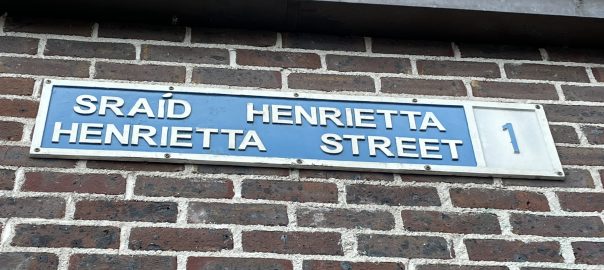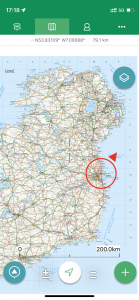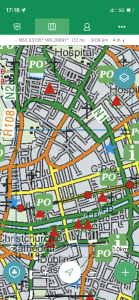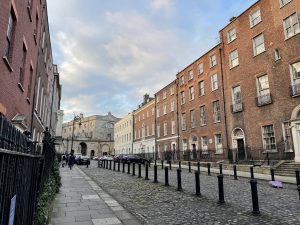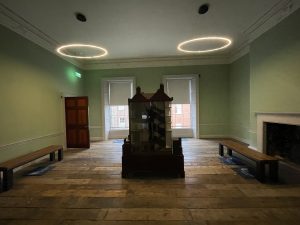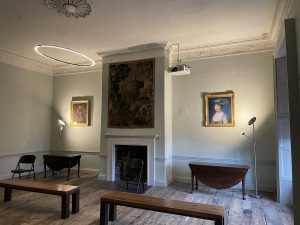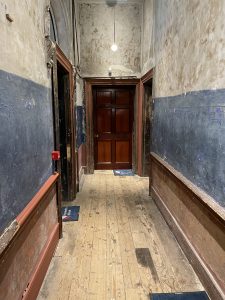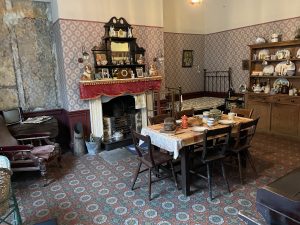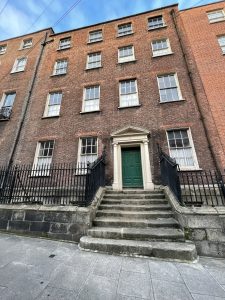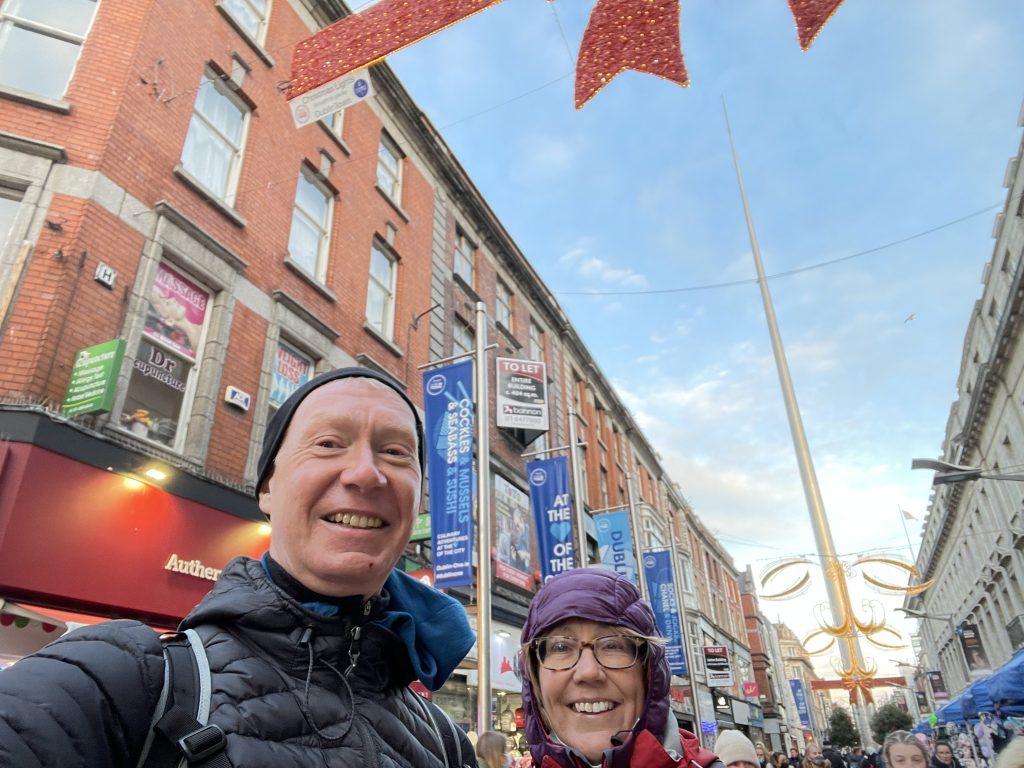Ireland day 0064. Wednesday 01 December 2021- Henrietta
Commentary
This is a bit of a long blog with yet more history in it. It’s quite interesting but I really won’t mind if you just skip to the bottom and look at the pictures!
In many ways, modern Ireland is a bit of a contradiction. It has an extremely high GDP per capita – sixth in the world and approximately the same as that of Switzerland. It is more than twice that of the UK, which is 29th in the ranking. And it manifests itself the big new houses being built in the countryside, the giant SUVs decorating the car parks, and the lavish new motorways which criss-cross the countryside. You also feel it in your pocket if you actually try and buy anything. But in other ways, it doesn’t feel so prosperous – the homeless on the streets in Dublin, the relatively un-modernised rail infrastructure, and the tattiness of some of the streets in town centres.
I am sure there are many learned treatises examining why Ireland has suddenly become so rich, and what the consequences have been for a largely rural country that was ill-prepared for the sudden influx of wealth. I haven’t read them but I do have the feeling that Ireland has suffered from a bit of a boom-and-bust cycle at many times in the past – the most recent bust was in 2008 and the most recent boom is today – so people spend when they have the money, never quite knowing how long the good times might last.
I’m also pretty sure that this boom-bust cycle, and the contrast between the wealthy and the less well-off, has actually been a feature of the Irish socio-economy for many years. It is in part a reflection of Ireland’s vulnerability to decisions taken elsewhere in the world, and we saw evidence of how this has played out in practice when we visited a relatively unassuming terrace house in Henrietta St, north Dublin this afternoon.
I’d spent the morning video-chatting to a friend who has recently moved to France – and I was relieved to learn that he was experiencing exactly the same challenges with health systems, car registration and driving licences as we were. Bureaucratic regimes seem to be pretty much the same the world over – well at least in Ireland and France they are. So by the time I came off the call, we didn’t have that much of the day left, so we thought that Henrietta St would make a perfect destination for the afternoon.
14 Henrietta St is a large Georgian property about halfway up the left side of the street. To call it a “terrace house” would be a bit of a misnomer because it’s massive. At least five storeys plus basement, with a labyrinth of rooms on each floor, in fact. It was built to accommodate a single wealthy family in the 1740s – you can read more about them in the captions below. It remained a well-to-do residence until about 1801 when the Acts of Union were passed, and a lot Ireland’s more prosperous residents upped sticks and returned to England. The Acts of Union themselves have a fascinating history but they were in part at least designed to help counter the threat of a Napoleonic invasion of England as it was feared that the French might use Ireland as a back door in to England (hence also the Martello Towers). Anyway one effect of the Acts was to dissolve the Irish parliament and transfer business to London. The MPs and all the infrastructure of wealth that went with them moved at the same time.
Much as today, Dublin was experiencing a housing crisis so when boom turned to bust around the time of the Acts, property developers started buying up the big Georgian properties like 14 Henrietta St and subdividing them into separate tenements. More and more families were crammed in so that by 1911, no. 14 which was designed for 1 family, was in fact accommodating no fewer than 100 people, some living 13 to a room. Needless to say, disease, death in childbirth and accidents were common, and in 1913 various reviews were written recommending improvements.
Sadly , the 1913 Dublin lockout, the 1916 uprising, the first world war, the war of independence and the civil war intervened and for the next 20 years things just got worse and Henrietta St deteriorated into a slum. Only in the 1930s was Dublin Corporation eventually able to start building new housing in the suburbs and people started moving out. The last resident of 14 Henrietta St in fact only moved out in the late 1970s.
Exactly the same thing is happening here today – there is a severe shortage of housing in Dublin, which is pushing prices everywhere sky-high at the moment (I learned this morning that for a very similar sized apartment to ours, my friend living in Provence is paying less than half what we are paying here). Only belatedly is supply now starting to catch up with demand, with smart new tower blocks popping up amongst the suburban estates of the 1930s. Who knows when the current cycle can end, but I strongly suspect that it will be an event not of Ireland’s making – perhaps something like the increase in the global corporation tax rate – that will be the trigger.
Anyway, back to Henrietta St. As with almost all of the historic attractions we have visited in Ireland, the house tour is extremely well organised – with half the rooms restored to their Georgian glory, and the rest left in their slum-like state. To see the two styles of living with only a few inches of wall and a few years of time separating them was staggering. We had an extremely knowledgeable guide and we were astonished to discover that his trainee guide that day was the same person who had guided us round the Beaulieu demesne near Drogheda a few weeks ago. In the wings of the tour we chatted about his aspirations as a tour guide and actually started beginning to feel a bit like locals!
Yet again our heads were spinning with knowledge after the visit so we retreated to a nearby café to get a hot drink (the museum was largely unheated – perhaps in fact it was unheatable – so we were freezing cold) and to reflect on what we had learned. I think we both feel we need a few history-free days to recover, and readers of this blog may well feel the same.
So that’s it for today – although just in case anyone was wondering, my Spanish speech went well yesterday, although rather embarrassingly I did forget what the word for “wife” is. So I clearly still have some important revision to do.
Today’s photos (click to enlarge)
